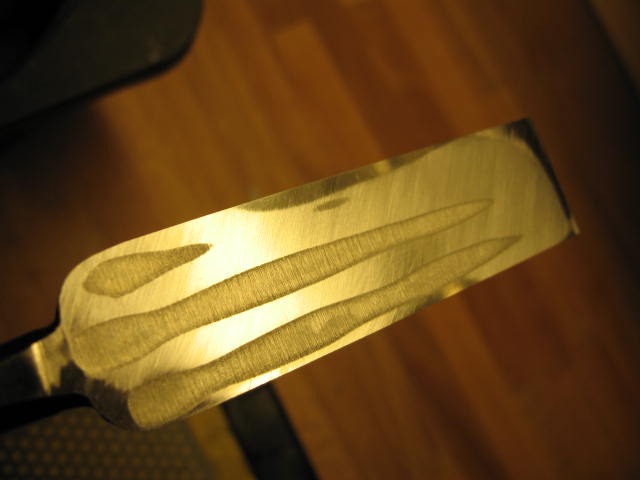Why bob,
It really depends on what type of work you are doing and what kind of woods you are working.........for general work i use a mix of stanley 750's and LN's, i hardly ever use my japanese chisels. Not sure why cause they are all sharp.... i think i just like the feel and balance of the 750's.
Kinda suppose whatever you are comfy with.
I copied the first reply below from the Japanes forums....
the guy has a good answer and worth reading. Although the question asked was slightly different to yours it still has some relevance
asking the question about why a certain number of chisels is needed is like asking an auto mechanic why they need more than one socket set.
Depending upon what you do, fewer or greater number of tools can be the ideal. Some carvers use one tool pretty much exclusively, others have dozens of carving tools. Some chisels get used only occasionally, but like that odd size Torx driver you need to remove the headlight assembly on your Saab, when you need a certain specific tool and nothing else will do the job, it's jolly nice to have it. Some mechanics approach everything with a sledgehammer and a pair of rusty vice-grips, others have $25,000 Snap-on extravaganzas.
I have some 40-50 chisels - I've lost count. Probably about 25% of them I use constantly, 50% of them I use frequently, and some I use occasionally. Some chisels I bought thinking I'd use them, like a corner chisel, or a swan-necked chisel, and then determined that i either didn't like them or didn't really have much used for them - so I sold 'em.
What chisels to get depends upon what you do obviously. In my case, I do both timber framing and furniture making, so I have a set of heavy striking chisels, a regular set of bench chisels, and a set of paring chisels, along with some timber slicks. Added to that I have a small collection of assorted gouges, some specialized shoji chisels, and a small assortment of crank neck chisels. That does the job for me, but I could probably do 75% of the work with a 7 set of bench chisels. If one were making violins, or carving a certain type of duck and nothing else, then I'm sure the set of chisels would have some significant differences in make-up to what I have.
You can make one tool work for a lot of things, or have specialized tools for a variety of applications. I tend to prefer the latter. I also prefer going to the car mechanic with lots of tools than to Bert down the road with the rusty vice grips approach.
I know if I'm slugging out mortises in large timbers all day, my bench chisels are going to take rather more abuse than is wise. And taking a 48 mm heavy chisel to trim a tenon on a kumiko seems a bit absurd too.
A similar question to this could be asked about how many sharpening stones to get, or how many planes. There is no one answer to that.
I




































